Table of Contents
Introduction:
In today’s workplace, safety is paramount. But have you ever stopped to consider the history of the very tools that keep us safe? This blog series, brought to you by R.P. Comtrade, explores the fascinating evolution of workplace safety gear, from its humble beginnings to the cutting-edge technology of today. We’ll delve into the history of personal protective equipment (PPE), trace the advancements in safety technology, and explore how these innovations have transformed workplace safety.
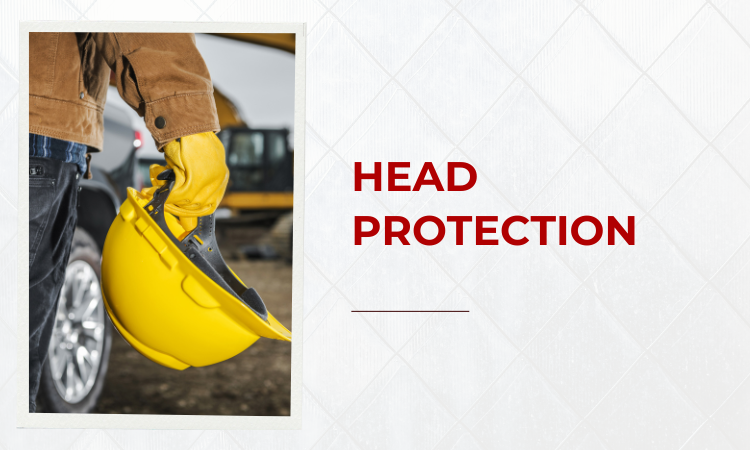
From Hard Hats to Smart Helmets: The Evolution of work place safety :
For generations, the most important thing in dangerous jobs has been keeping one’s head safe. For more than a century, the hard hat has been a reliable symbol of industrial environments and construction sites. However, the history of headgear is far from over. Let’s go back in time and see how developments in safety technologies have influenced the evolution of head protection.
Edward Bullard’s creation of the first hard hat in the late 1800s is where our story starts. This original design, which was made of canvas and leather, was intended to protect miners from falling debris. With increased impact resistance, materials like polyethylene, fiberglass, and aluminum eventually came to be accepted as the norm.
Conventional hard hats can have certain drawbacks, though. They provide very little side-impact protection and are mainly protective against falling items. At this point, the development accelerates with the invention of safety helmets. With wider brims for better side protection and chin straps to keep the helmet from coming loose during falls, these more sophisticated headgear abide by stronger safety regulations.
Even more fascinating is what lies ahead for head protection. There are new helmets on the market that have integrated communication systems, impact sensors, and environmental monitors. By providing real-time data on temperature, air quality, and noise levels in addition to detecting and recording impacts, these intelligent helmets support a more thorough approach to workplace safety.
The development of head protection is evidence of our continued dedication to employee safety. We’ve gone a long way in safeguarding the most important part of our bodies, from the simple origins of the hard hat to the sophisticated features of smart helmets.
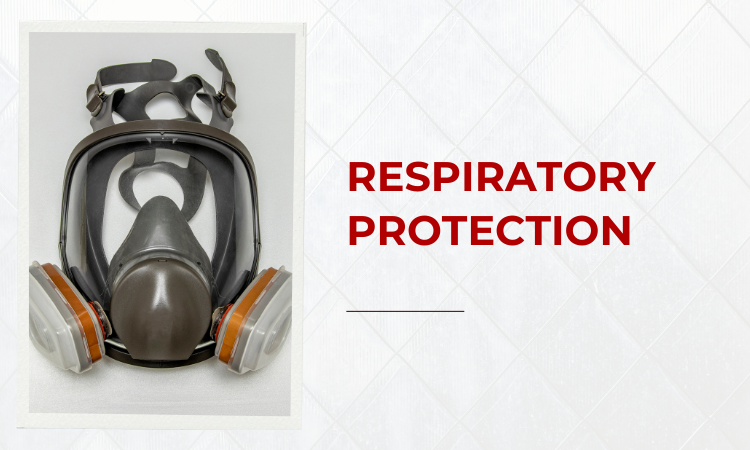
Breathing Easy: A History of Respiratory Protection in the Work place safety :
Dust, pollutants, and hazardous gasses posed covert hazards to workers long before the days of manufacturing masks and sophisticated respirators. The story of human ingenuity throughout the history of respiratory protection is one of the amazing inventions that continuously look for ways to guarantee clean air for workers in dangerous areas.
According to our oldest records, animal bladders were utilized by miners in ancient Rome as crude dust filters. In later years, Leonardo da Vinci drew out a plan for a respirator that used damp cloths for filtration. Even though they were rudimentary, these early efforts set the stage for further advancements.
Due to the industrial revolution of the 19th century, people were more aware of the risks associated with airborne pollutants. During this time, the first filter masks—often constructed of wool or fabric—were invented. These early models, however, provided little protection and were frequently uncomfortable to wear for lengthy periods of time.
There have been major developments in respiratory protection during the 20th century. The field was transformed with the development of the canister gas mask during World War I, which offered effective defense against chemical warfare chemicals. In the decades that followed, more advanced filter materials were created, and positive pressure respirators—which provided the wearer with clean air—were introduced.
Respiratory protection is becoming a very sophisticated field these days. Our selection of respirators includes dust masks for construction workers and self-contained breathing apparatuses (SCBA) for firemen, each tailored to tackle different types of threats. Improvements in materials science have produced respirators that are more comfortable, lighter and have higher filtering efficiency.
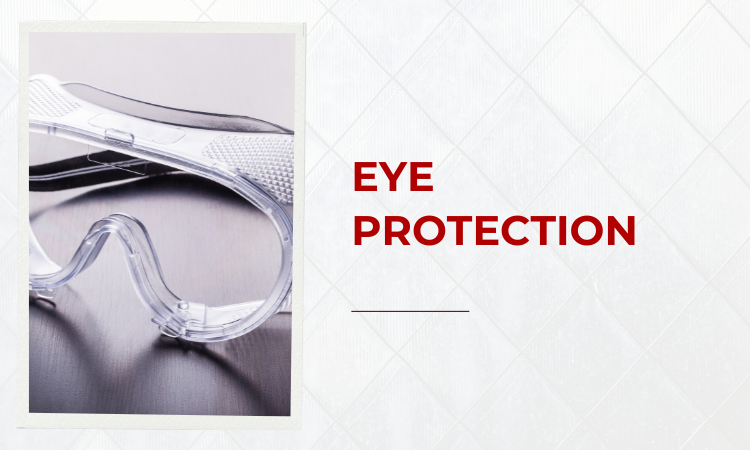
3. From Goggles to Faceshields: Eye Protection Through the Ages:
An eye injury can result from flying debris, dust, toxins, or even harmful light, as the human eye is a delicate organ. From basic goggles to the more complete face shields we see today, eye protection has evolved over time as a result of the historical significance placed on safeguarding these priceless windows from the outside world.
The lowly progenitors of goggles, which were simple eye protection made of leather, horn, or even fabric with slits, are where our trip starts. Although they provided some protection, these early versions were uncomfortable and ill-fitting for both soldiers and blacksmiths.
The first real goggles were created in the tenth century, consisting of polished gemstones or animal horn fitted in a metal frame. These early models offered some protection from sparks and molten glass, but made for a clearer view—they were mostly employed by Venetian glassblowers.
Modern advances in eye protection began with the Industrial Revolution. In order to provide greater adaptability and protection against certain risks, wire-framed goggles with interchangeable lenses were invented in the 18th century. Greater comfort and durability were added to goggle frames by the 19th century because to the use of materials like vulcanized rubber.
Face shield technology made tremendous advancements in the 20th century. These clear shields, originally composed of celluloid, provided more comprehensive facial protection. Face shields are a useful tool for protecting workers from flying debris and chemical splashes. Originally employed in welding and other high-heat operations, face shields soon spread to a variety of sectors.
Protective eyewear is still evolving today. Exceptional impact resistance and clarity are provided by modern goggles and face shields, which are constructed from sophisticated materials like polycarbonate. Additionally, for improved functioning and comfort, some versions come equipped with ventilation systems and anti-fog coatings.

4. Glove Innovation: Protecting Your Hands Throughout History:
With the help of our hands, we are able to complete a great deal of work in a day. These diligent limbs, however, are frequently subjected to a variety of risks at work, including chemicals, high temperatures, and cuts and abrasions. With ongoing adaptation to offer improved hand protection, the history of gloves has paralleled the evolution of work itself.
Ancient Egyptian tomb paintings depicting gloves made of leather and linen provide the first known examples of gloves. These primitive patterns probably functioned as both a status symbol and a means of defense against the extremes of the desert environment.
Gloves changed over time to accommodate the needs of skilled crafts like metalworking and others. During the Middle Ages, thick leather or metal gauntlets provided vital protection for knights fighting in Europe. Simpler leather gloves were the means by which blacksmiths and other artisans protected their hands from burns and heat in the meantime.
Glove technology advanced dramatically throughout the Industrial Revolution. Cotton gloves, which provide safety and dexterity for textile workers, were invented in the eighteenth century. As rubber technology advanced in the 19th century, waterproof gloves were created, which was beneficial for sectors such as food processing and fishing.
Artificial materials, such as PVC and nylon, saw a rise in the 20th century. With the help of these novel materials, gloves with improved qualities might be produced, such as heat-resistant gloves for welders and cut-resistant gloves for construction workers.
Innovation in gloves is still pushing the envelope today. Comfort and functionality are combined with protection in modern gloves, thanks to features like moisture-wicking materials and touchscreen compatibility. Furthermore, improved breathability and dexterity in gloves have been made possible by advances in material science.
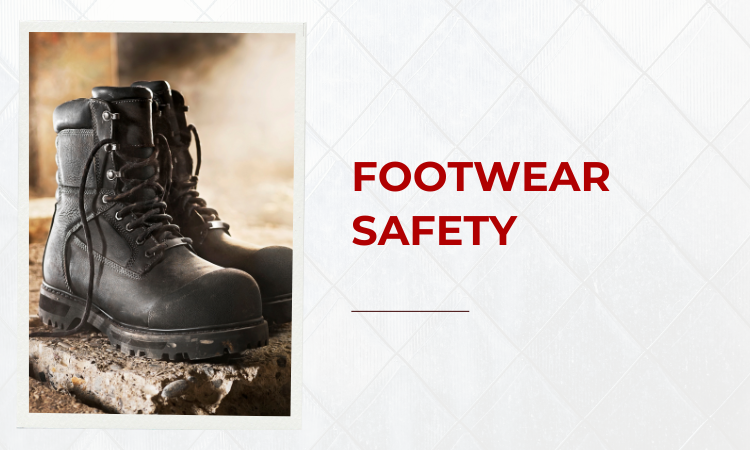
5. Boots Made for Work: The Evolution of Work place Safety :
Footwear has been an essential component of foot protection against environmental factors and occupational dangers for millennia. However, it’s an amazing story of creativity and adaptation of how basic boots became the safety gear we use today.Our earliest ancestors most likely protected their feet with crude foot coverings constructed of plant fibers or animal skins. With its ability to protect laborers, farmers, and soldiers, leather boots became the norm in ancient societies such as Egypt and Greece. These early designs did, however, offer very little protection.
One significant shift was the Industrial Revolution. Workers became more vulnerable to foot injuries as factories and heavy machinery grew in popularity. Steel-toed boots were first developed in the 19th century and were mostly utilized in construction and mining. These initial iterations provided essential protection against falling items and crushing injuries, although being heavy and uncomfortable.
There were major developments in safety footwear during the 20th century. The development of waterproof boots for the fishing and agricultural industries was facilitated by the introduction of new materials such as vulcanized rubber. Moreover, lighter and more comfortable steel-toe solutions were made possible by developments in metallurgy.
The need to wear appropriate footwear for work was emphasized by a wave of safety rules that emerged in the second half of the 20th century. This resulted in the development of specific boots for different types of risks, such as electrical hazard-rated boots for electricians and building sites with puncture-resistant soles.
Safety footwear isn’t a one-size-fits-all option these days. Many features for protection and comfort are included in modern boots. Due to their superior insulation and reduced weight, composite materials have frequently taken the role of steel. Furthermore, improvements in overall comfort and slide resistance have been made to the design of soles.
6. The History of High-Visibility Clothing:
Imagine a world in which road workmen disappeared beneath the dusk sky, or construction workers merged seamlessly with their environment. Fortunately, there is a colorful world of high-visibility apparel to avoid these kinds of situations. However, this seemingly straightforward piece of safety equipment has an unexpectedly long history, developing to keep workers safe along with technological improvements.
The narrative starts in the early 1900s when riders had to rely on crude reflective sashes in order to be seen at night. High-viz clothing wasn’t introduced to the US until the 1930s when railroad employees started wearing it to prevent accidents with approaching trains. These early iterations increased worker visibility in low light by using reflective fabric and vivid colors like orange or yellow.
Reflective materials gained popularity in the 1960s, which marked a paradigm shift. This invention greatly increased the visibility of workers during the day and night and improved the efficacy of high-viz apparel. Manufacturers also started experimenting with novel patterns and designs in an effort to increase worker comfort and visibility.
A new age of high-viz innovations began in the 1990s. When bright hues were introduced, employees stood out even in broad daylight. In order to provide improved performance from all angles, reflecting materials were further improved at the same time. Retroreflectivity, a significant advancement, made it possible for light to return straight to the source (headlights, for example), increasing worker visibility at a longer range.
High-visibility apparel is becoming a standard component of workplace safety laws in many different sectors of the economy. Contemporary high-vis clothing is made with a variety of features, such as ergonomic designs and breathable fabrics, that guarantee worker comfort and excellent visibility.
7. Material Marvels: How Technology Improved Safety :
For years, crude tools made of leather, wood, or metal were the main source of industrial safety. Even while these early models provided some protection, they were frequently heavy, unpleasant, and had a limited range of use. Fortunately, the history of safety equipment is one of continuous advancement, closely linked to the development of materials science.
One important transition point was the Industrial Revolution. Workers faced more risks as factories and large machinery proliferated. During this time, new materials such as vulcanized rubber were introduced, which resulted in the creation of waterproof boots for the fishing and agricultural industries. Improvements in steel manufacturing also made stronger and more accessible materials for hard hats and other protection gear available.
Plastics and other synthetic materials had a rise in the 20th century. Because of the greater range of qualities, these new materials offered, safer equipment could be made that was more comfortable and lighter. Due to its improved dexterity and durability, nylon became the preferred material for harnesses and gloves. Plastics such as polycarbonate transformed eye protection by producing clear, robust, and lightweight visors for goggles and face shields.
With the development of composite materials, further breakthroughs were made in the second part of the 20th century. Composites, which combined the qualities of several materials, provided remarkable strength-to-weight ratios. As a result, safety footwear and helmets with increased protection at a lower weight were created. Additionally, improved ventilation and moisture management made possible by developments in breathable textiles like Gore-Tex transformed safety clothing comfort.
Material science is still pushing the limits of safety equipment today. Gloves and apparel are being made using advanced fabrics that have improved resistance to cuts and punctures. In the meantime, scientists are investigating smart materials that have the ability to monitor vital signs or even adjust to changes in temperature.
8. Work place Safety Gear Through the Ages: A Look at Different Historical Industries:
Rather from being a single narrative, the development of workplace safety gear is a tapestry woven from the demands and difficulties faced by many industries over time. In this section, we will examine the evolution of safety gear in several occupations:
Mining: In the early days of mining, workers used heavy gear and crude leather hats to shield themselves from falling rocks and dust. Explosion risks were considerably decreased when the safety lamp was developed in the eighteenth century. Mine worker safety was significantly increased in the 20th century with the introduction of respirators, hard hats, and heavy-duty boots.
Construction: Without any protection, early construction workers worked. With the 19th century came crude eye protection and simple leather gloves. A revolution in protective gear occurred with the invention of steel-toed boots and hard hats in the early 1900s. Fall protection systems, high-visibility vests, and harnesses are just a few of the PPE that are available on construction sites today.
Firefighting: Early firefighters protected themselves from heat and flames by donning leather clothing and simple helmets. Personal safety was not addressed by the hand pumper invention of the 17th century, which revolutionized firefighting. Clothing that resisted flames and the first self-contained breathing equipment (SCBA) was introduced in the 1800s. Using sophisticated SCBAs and cutting-edge heat-resistant gear, firefighters are better protected nowadays.
Manufacturing: Without adequate safety, early factory workers had to deal with risks including dust, fumes, and machinery. A small amount of respite came with the invention of respirators and safety eyewear in the 19th century. Ear protection, gloves, and safety footwear all witnessed developments in the 20th century. Using a variety of PPE tailored to the machinery and materials involved, manufacturing facilities today prioritize safety rules.
9. The Rise of Regulations: How Laws Shaped Work place Safety :
Workplace safety was mostly an issue of personal accountability or employer benevolence for a large portion of history. The landscape didn’t really change until regulations were more prevalent, which influenced the progression of occupational safety equipment from a recommendation to a need.
Rapid industrial growth and an increase in workplace accidents and injuries were both brought about by the Industrial Revolution. The 19th century saw the emergence of the first attempts at occupational safety laws, with Britain and Germany setting the standard. These early regulations mostly addressed fundamental safety precautions, such as enclosing equipment and setting minimum age limits for employees.
Safety requirements increased significantly over the 20th century. Following the atrocities of World War I, nations started passing stronger laws in an effort to improve worker protection. In a number of industries, these laws required the use of particular personal protective equipment (PPE). For example, laws mandating respirators in mines and hard hats in construction became standard.
The creation of governmental organizations devoted to occupational safety expedited developments even more. In order to guarantee compliance, agencies such as the Occupational Safety and Health Administration (OSHA) in the US establish precise guidelines for safety equipment and carry out frequent inspections.
Not only have regulations made the use of personal protective equipment mandatory, but they have also been instrumental in advancing safety technologies. In order to meet or surpass legal requirements, manufacturers have consistently developed and enhanced safety gear due to tougher standards. Because of this emphasis on innovation, worker PPE has become lighter, more comfortable, and eventually more effective.
Safety standards are a never-ending narrative. Regulations change as new sectors and technology arise to handle changing dangers. Additionally, new laws and standards are developed with input from continuing studies on workplace safety.
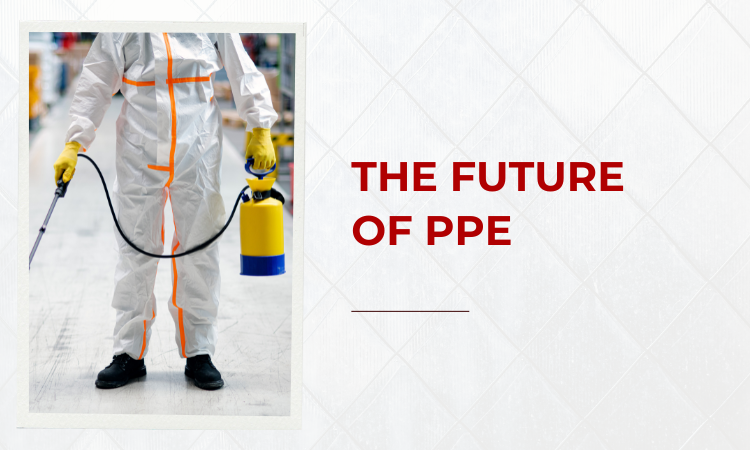
10. The Future of PPE: What Can We Expect in Safety Tech?
Workplace safety equipment has a long way to go. We may anticipate fascinating developments in personal protective equipment (PPE) that will completely change workplace safety as technology continues to improve at a rapid rate. Here’s a look at potential developments in safety technology in the future:
Imagine PPE that adapts to the environment. Consider PPE that can adjust to its surroundings. Workers could be kept warm in cold surroundings and cool in hot ones by wearing helmets with integrated climate control systems. Gloves that modify their hold to suit the work at hand may reduce the risk of injury and enhance dexterity. The advancement of materials that are intelligent and can react to environmental stimuli has brought these possibilities closer than ever.
PPE may develop even more sophisticated features, such as sensors that track body temperature, heart rate, and even levels of exhaustion. Supervisors could receive real-time data so they can take action before an incident happens. Furthermore, sensors have the ability to identify dangerous surroundings, set off alerts or automatically modify respirator settings to provide the best possible protection.
Safety equipment may easily incorporate augmented reality (AR) technology to provide workers with real-time instructions and information. Imagine firefighters utilizing heat signature detection to navigate smoke-filled buildings or construction workers getting blueprints superimposed on their visors. Augmented Reality (AR) holds great promise to transform training regimens and improve workers’ situational awareness in high-risk areas.
PPE may revolve around remaining connected in the future. It might be possible for helmets to include integrated communication devices that let employees communicate with managers and one another. For complicated projects needing real-time coordination or emergency reaction scenarios, this smooth communication may be essential.
Conclusion:
Workplace safety equipment has a long way to go. We may anticipate even more developments in PPE that put the comfort, usefulness, and welfare of workers first as technology keeps developing. We at R.P. Comtrade are dedicated to remaining on the cutting edge of these advancements and making sure you have access to the best safety gear available to keep you safe. Come along as we investigate the fascinating future of workplace safety!
